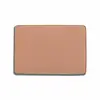Kaleidos Makeup Symphony Contour Trio Versus KVD Vegan Beauty Shade + Light Powder Contour Palette Refill Pan
What's inside
What's inside
 Key Ingredients
Key Ingredients

 Benefits
Benefits

 Concerns
Concerns

 Ingredients Side-by-side
Ingredients Side-by-side

Talc
AbrasiveMica
Cosmetic ColorantSynthetic Fluorphlogopite
Silica
AbrasiveBoron Nitride
AbsorbentDimethicone
EmollientEthylhexyl Palmitate
EmollientZinc Stearate
Cosmetic ColorantLauroyl Lysine
Skin ConditioningCaprylyl Glycol
EmollientTriethoxycaprylylsilane
Magnesium Myristate
Ethylhexylglycerin
Skin ConditioningMethicone
EmollientKaolin
AbrasiveCI 77891
Cosmetic ColorantCI 16035
Cosmetic ColorantIron Oxides
CI 77742
Cosmetic ColorantCI 77163
Cosmetic ColorantSynthetic Wax
AbrasiveOctyldodecanol
EmollientCI 77007
Cosmetic ColorantAluminum Starch Octenylsuccinate
AbsorbentHydrogen Dimethicone
Magnesium Stearate
Cosmetic ColorantTalc, Mica, Synthetic Fluorphlogopite, Silica, Boron Nitride, Dimethicone, Ethylhexyl Palmitate, Zinc Stearate, Lauroyl Lysine, Caprylyl Glycol, Triethoxycaprylylsilane, Magnesium Myristate, Ethylhexylglycerin, Methicone, Kaolin, CI 77891, CI 16035, Iron Oxides, CI 77742, CI 77163, Synthetic Wax, Octyldodecanol, CI 77007, Aluminum Starch Octenylsuccinate, Hydrogen Dimethicone, Magnesium Stearate
Mica
Cosmetic ColorantZinc Stearate
Cosmetic ColorantSilica
AbrasiveSqualane
EmollientPolyethylene
AbrasiveEthylhexyl Palmitate
EmollientDimethicone
EmollientGlyceryl Caprylate
EmollientLauroyl Lysine
Skin ConditioningSodium Dehydroacetate
PreservativePotassium Sorbate
PreservativeTocopheryl Acetate
AntioxidantCarthamus Tinctorius Seed Oil
MaskingRosa Canina Flower Extract
AstringentWater
Skin ConditioningSodium Sulfate
CI 77891
Cosmetic ColorantIron Oxides
CI 77007
Cosmetic ColorantCI 77742
Cosmetic ColorantMica, Zinc Stearate, Silica, Squalane, Polyethylene, Ethylhexyl Palmitate, Dimethicone, Glyceryl Caprylate, Lauroyl Lysine, Sodium Dehydroacetate, Potassium Sorbate, Tocopheryl Acetate, Carthamus Tinctorius Seed Oil, Rosa Canina Flower Extract, Water, Sodium Sulfate, CI 77891, Iron Oxides, CI 77007, CI 77742
 Reviews
Reviews

Ingredients Explained
These ingredients are found in both products.
Ingredients higher up in an ingredient list are typically present in a larger amount.
This pigment is called Ultramarine blue lazurite. It gives a saturated blue color, but can be used to create other colors as well.
According to the manufacturer, it is usually made from kaolin, sodium sulfate, sodium carbonate, sulfur, and charcoal.
This ingredient is used to add a violet color to cosmetics.
It is created by reacting phosphoric acid, ammonium dihydrogen orthophosphate, and manganese dioxide.
Ci 77891 is a white pigment from Titanium dioxide. It is naturally found in minerals such as rutile and ilmenite.
It's main function is to add a white color to cosmetics. It can also be mixed with other colors to create different shades.
Ci 77891 is commonly found in sunscreens due to its ability to block UV rays.
Learn more about CI 77891Dimethicone is a type of synthetic silicone created from natural materials such as quartz.
What it does:
Dimethicone comes in different viscosities:
Depending on the viscosity, dimethicone has different properties.
Ingredients lists don't always show which type is used, so we recommend reaching out to the brand if you have questions about the viscosity.
This ingredient is unlikely to cause irritation because it does not get absorbed into skin. However, people with silicone allergies should be careful about using this ingredient.
Note: Dimethicone may contribute to pilling. This is because it is not oil or water soluble, so pilling may occur when layered with products. When mixed with heavy oils in a formula, the outcome is also quite greasy.
Learn more about DimethiconeEthylhexyl Palmitate, also known as octyl palmitate, is created from 2-ethylhexyl alcohol and palmitic acid. It is a fatty acid ester.
The fatty acid content of Ethylhexyl Palmitate makes it an emollient. Emollients help soften and hydrate your skin by trapping moisture within.
Ethylhexyl Palmitate is also used to help improve the texture of cosmetics. It helps other ingredient dissolve in products and help disperse ingredients more evenly.
You'll likely find this ingredient in sunscreen, as it is often used to mix UV-blocking ingredients such as avobenzone and ethylhexyl triazone.
It can also help stabilize the fragrances in a product as a fragrance fixative.
Ethylhexyl Palmitate can be used to substitute mineral oil.
Due to its high fatty acid content, it may not be fungal-acne safe.
Learn more about Ethylhexyl PalmitateThis ingredient comes from a fatty acid (lauric acid) and amino acid (lysine). It is used to add a silky feel to cosmetics.
According to a manufacturer, its fatty acid base leaves a silky feeling on the skin. It also has emollient properties because of this. Emollients help soften skin by preventing water from evaporating.
Lauroyl lysine is barely soluble in water.
Learn more about Lauroyl LysineMica is a naturally occurring mineral used to add shimmer and color in cosmetics. It can also help improve the texture of a product or give it an opaque, white/silver color.
Serecite is the name for very fine but ragged grains of mica.
This ingredient is often coated with metal oxides like titanium dioxide. Trace amounts of heavy metals may be found in mica, but these metals are not harmful in our personal products.
Mica has been used since prehistoric times throughout the world. Ancient Egyptian, Indian, Greek, Roman, Aztec, and Chinese civilizations have used mica.
Learn more about MicaSilica, also known as silicon dioxide, is a naturally occurring mineral. It is used as a fine, spherical, and porous powder in cosmetics.
Though it has exfoliant properties, the function of silica varies depending on the product.
The unique structure of silica enhances the spreadability and adds smoothness, making it a great texture enhancer.
It is also used as an active carrier, emulsifier, and mattifier due to its ability to absorb excess oil.
In some products, tiny microneedles called spicules are made from silica or hydrolyzed sponge. When you rub them in, they lightly polish away dead skin layers and enhance the penetration of active ingredients.
Learn more about SilicaZinc Stearate is the metal salt of stearic acid. It is a white solid used to bind, thicken, and lubricate products.
This ingredient is common in powder makeup, where it helps keep the powder together.
Zinc Stearate is hydrophobic and repels water.
This ingredient can be sourced from non-animal or animal sources. It is best to reach out to the brand to see where they source this ingredient from.
Learn more about Zinc StearateThis ingredient is a combination of red, black, and yellow iron oxide pigments. This combination of colors is usually found in foundation, because it results in a "skin" color.